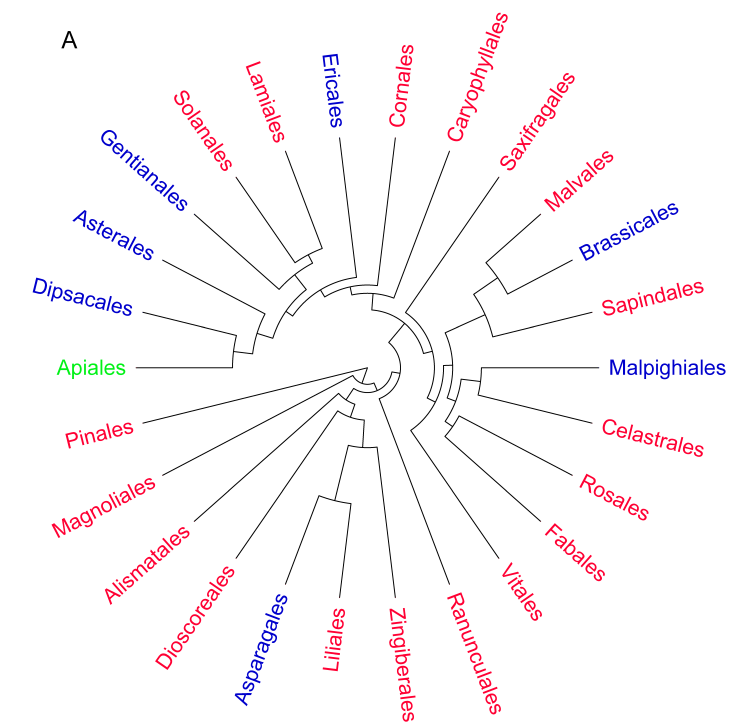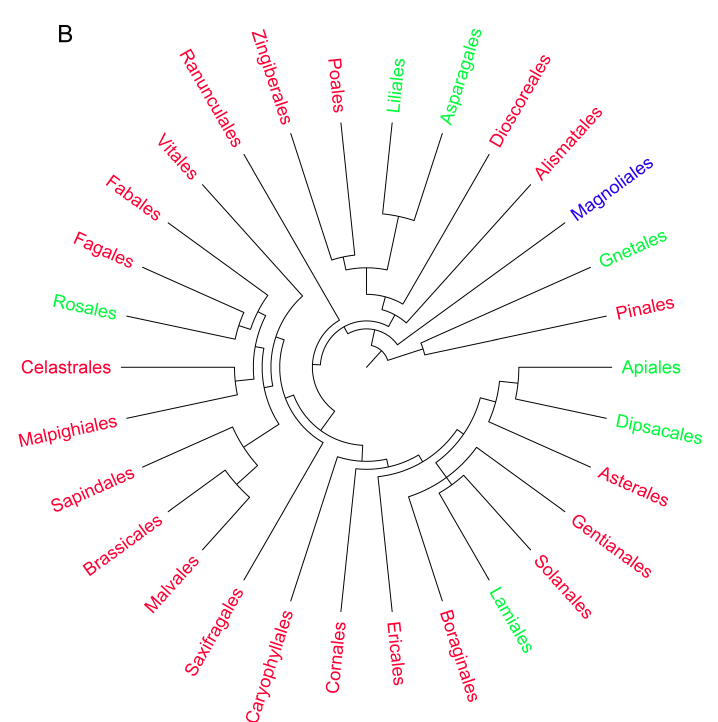The diversity of traits associated with plant regeneration is often shaped by functional trade-offs where plants typically do not excel at every function because resources allocated to one function cannot be allocated to another. By analyzing correlations among seed traits, empirical studies have shown that there is a trade-off between seedling development and the occupation of new habitats, although only a small range of taxa have been tested; whether such trade-off exists in a biodiverse and complex landscape remains unclear.
Research group lead by Prof. LI Dezhu from Kunming Institute of Botany, Chinese Academy of Sciences (KIB/CAS) is focused on the taxonomy, systematics and seed ecology, and has recently conducted a study of the functional trade-offs of seeds.
This study amassed seed trait data of 1,119 species from a biodiversity hotspot of the Mountains of Southwest China and analyzed the relationship between seed mass and the number of seeds and between seed mass and time to germination.
The research results showed that seed mass was negatively correlated with seed number but positively correlated with time to germination (Figure 1). The same trend was found regardless of variation in life-form and phylogenetic conservatism.
Furthermore, the relationship between seed mass and other seed traits was randomly dispersed across the phylogeny at both the order and family levels (Figure 2).
This study suggests that there is a functional trade-off between seedling development and new habitat occupation for seed plants in the Mountains of Southwest China. Larger seeds tend to produce fewer seedlings but with greater fitness compared to those produced by smaller seeds, whereas smaller seeds tend to have a larger number of seeds that germinate faster compared to large-seeded species.
This study provides a mechanistic explanation for the relatively high levels of plant diversity currently found in a heterogeneous region of the Mountains of Southwest China.
The research finding has been published in Ecology and Evolution entitled “ Functional trade-offs and the phylogenetic dispersion of seed traits in a biodiversity hotspot of the Mountains of Southwest China'.
This study was supported by the Conservation Center in Germplasm Bank of Wild Species, the National Key Basic Research Program of China (2014CB954100), the Program of Science and Technology Talents Training of Yunnan Province (2017HA014), and the Applied Fundamental Research Foundation of Yunnan Province (2014GA003).

Figure 1 : Ordinary Pearson correlations between seed mass and seed number (a) as well as between seed mass and time to germination (b) for 1,119 seed plants collected from the Mountains of Southwest China. (c) and (d) represent Ordinary Pearson correlations with phylogenetically independent contrasts for the same response variables. (Image by KIB)


Figure 2 : Phylogenetic tree based on APGIII at the order level for 1,119 samples collected from our study site in the Mountains of Southwest China. Tree depicts the phylogenetic dispersion of the relation between (a) seed mass and seed number as well as (b) seed mass and time to germination. The taxa highlighted in blue indicate the presence of a significant negative relationship, while the taxa highlighted in green indicate the occurrence of a significant positive relationship. The taxa highlighted in red did not show a significant relation among seed traits. (Image by KIB)
Contact:
YANG Mei
General Office
Kunming Institute of Botany, CAS
Email: yangmei@mail.kib.ac.cn
(Editor: YANG Mei)




